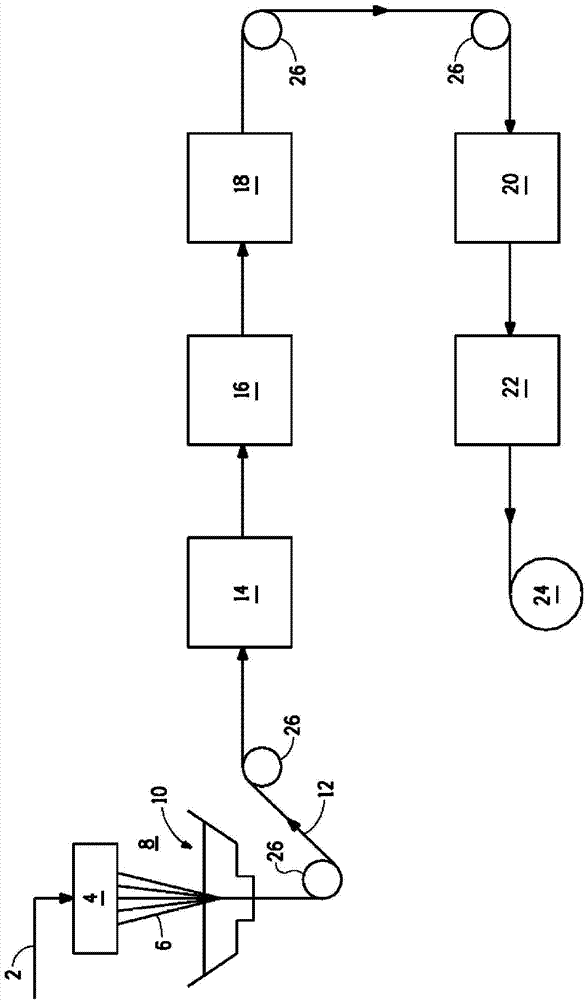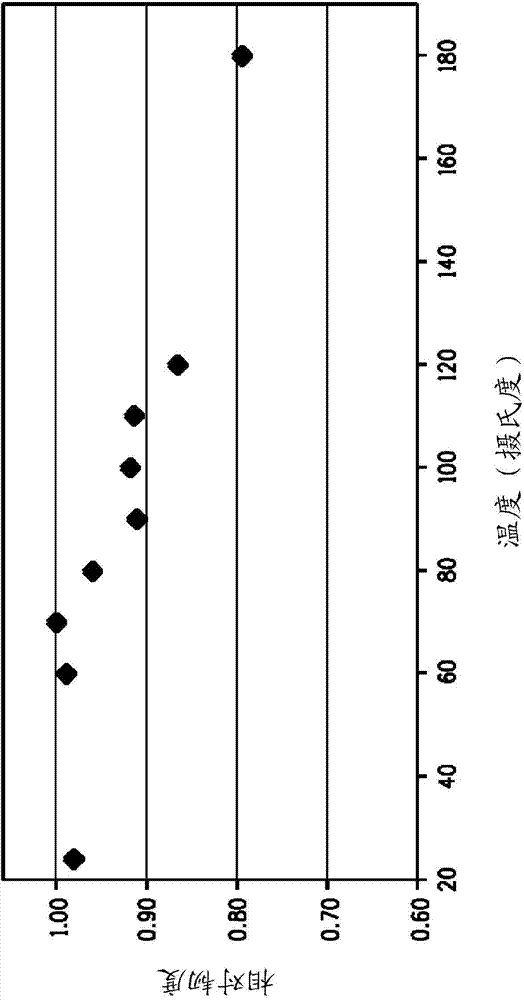Preparation and drying of copolymer fibers
A technology of copolymers and fibers, applied in the direction of fiber chemical characteristics, artificial filament cleaning/drying, single-component synthetic polymer rayon, etc., can solve the problems of known methods such as expensive and low investment economy
- Summary
- Abstract
- Description
- Claims
- Application Information
AI Technical Summary
Problems solved by technology
Method used
Image
Examples
example
[0063] Example: general case
[0064] The copolymer is prepared by copolymerizing the monomers p-phenylenediamine, 5(6)-amino-2-(p-aminophenyl)benzimidazole and terephthaloyl dichloride. The molar ratio of 5(6)-amino-2-(p-aminophenyl)benzimidazole to p-phenylenediamine is 70:30 and p-phenylenediamine and 5(6)-amino-2-(p-aminophenyl ) The mol ratio of benzimidazole and terephthaloyl dichloride is 1:1. A spinning solution of the polymer in sulfuric acid was then prepared and the filaments were spun from the air gap in the spinneret into a coagulation bath to form a copolymer yarn. The yarn consisted of 270 filaments with a linear density of 3 denier / filament. The yarn is then washed with water and hung onto bobbins. Intrinsic viscosity and percent sulfur were measured on this yarn sample. The resulting yarn had a sulfur content of 3.08% by weight and an intrinsic viscosity of 3.54 dl / g.
[0065] The yarn was then fed from the spools to a series of 10 continuous wash box m...
example 1
[0069] Several samples of wet yarn were first run through low temperature drying rolls operating at a constant surface temperature and then through a high temperature oven with the rolls mentioned in the comparative example. Each individual run was performed at different drying roll temperatures, followed by high temperature drying at 180° C. in a roll oven. Specifically, individual samples of wet yarn were run through drying rolls operating at the following temperatures: 25°C, 60°C, 70°C, 80°C, 90°C, 100°C, 110°C, and 120°C. In other words, the wet yarn contacts the first heated roll at 25°C, 60°C, 70°C, 80°C, 90°C, 100°C, 110°C, and 120°C. The total residence time on the drying rolls was 4.5 minutes before it was passed through an attached roll oven to complete drying.
example 2
[0071] The set of yarns from Example 1 and the yarns from Comparative Example A were then each individually and equally heat treated in a refractory type tubular oven operating at a maximum temperature of 400°C. The tenacity of each yarn was then tested and then plotted against the first roll temperature experienced by the yarn as shown in Example 1. The relative tenacity of these yarns was then calculated using the following formula; for convenience, the highest measured tenacity was chosen as the benchmark tenacity:
[0072] Relative toughness = actual toughness / benchmark toughness
[0073] figure 2 is a graph of first roll temperature versus relative tenacity and shows higher yarn tenacity resulting from controlling the initial drying temperature experienced by the yarn.
PUM
 Login to View More
Login to View More Abstract
Description
Claims
Application Information
 Login to View More
Login to View More - R&D
- Intellectual Property
- Life Sciences
- Materials
- Tech Scout
- Unparalleled Data Quality
- Higher Quality Content
- 60% Fewer Hallucinations
Browse by: Latest US Patents, China's latest patents, Technical Efficacy Thesaurus, Application Domain, Technology Topic, Popular Technical Reports.
© 2025 PatSnap. All rights reserved.Legal|Privacy policy|Modern Slavery Act Transparency Statement|Sitemap|About US| Contact US: help@patsnap.com


